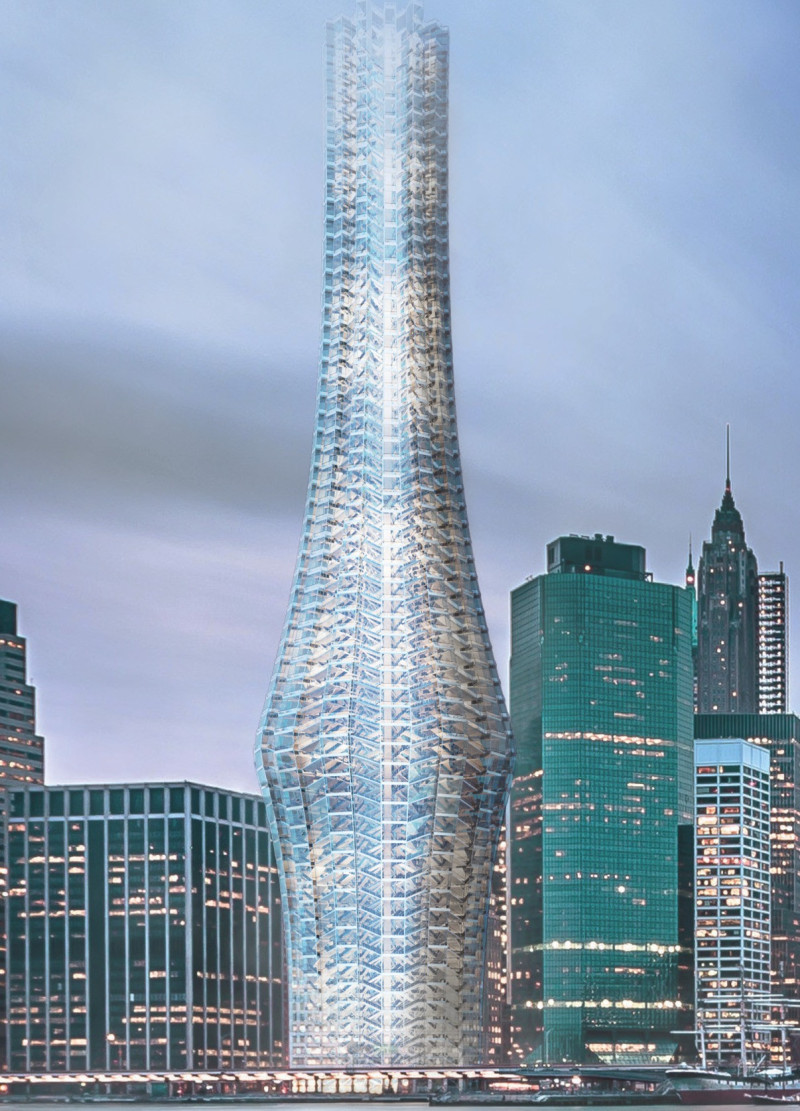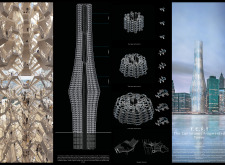5 key facts about this project
The project features a modular and layered design concept that emphasizes flexibility and adaptability. It is set within an urban environment and caters to mixed-use needs, combining residential and commercial spaces. The structure allows for a gradual construction process, enabling early occupancy and creating a vibrant atmosphere from the start. The layered organization of spaces transitions smoothly from large communal areas to smaller, private settings.
Layered Organization
Three distinct layers make up the building, each designed for different functions that meet various user needs. This layering creates a gradient of programmatic situations that support a range of activities. The design enhances usability and provides visual interest, as each layer showcases its unique character and architectural style.
Hyperfragmentation of Space
A notable aspect of the design is its hyperfragmentation of architectural elements, which changes the way traditional towers are perceived. This results in complex spatial relationships that enrich the experience for users. Different module sizes create a variety of spaces, accommodating diverse living and working patterns while encouraging interaction and exploration.
Fluid Circulation
The design supports fluid circulation through direct connections between slabs, reducing the need for elevators and allowing occupants to move freely between floors. The integration of stairwells encourages a natural flow of movement, improving accessibility and fostering a sense of community among users as they navigate different levels.
Activity-Based Environment
An activity-based work environment is a key focus, giving users the freedom to choose where to work based on their current needs. This flexibility enhances productivity and creativity, facilitating engagement with the surroundings. The careful arrangement of spaces allows for both collaborative workplaces and quiet areas for focused tasks, catering to a variety of preferences.
Large windows along the facade invite natural light, illuminating the interiors and creating a warm atmosphere that emphasizes the relationship between the various layers and the spaces they provide.



















































